
Overview
Museums, historical sites, and similar institutions industry is a part of the arts, entertainment, and recreation sector. Industries in this subsector engage in the preservation and exhibition of objects, sites, and natural wonders of historical, cultural, and/or educational value. The industry includes museums, historical sites, zoos, aquariums, arboretums, botanical gardens, planetariums, and other similar institutions.
GAO’s RFID, BLE, IoT, and drone technologies have helped its customers in museums, historical sites, and similar institutions Industry to improve their work processes, their operations and productivity by better management of their staff, materials, and operational equipment such as security equipment, cleaning equipment, moving equipment, exhibit maintenance equipment, audiovisual equipment, computer equipment, storage equipment, first aid equipment, and fire extinguishers.
Ranked as one of the top 10 global RFID suppliers, GAO RFID Inc. is based in New York City, U.S. and Toronto, Canada. GAO offers a comprehensive selection of UHF, HF (including NFC) and LF RFID (radio frequency identification) readers and tags, BLE (Low Energy Bluetooth) gateways and beacons, and various RFID and BLE systems such as people tracking, asset tracking, access control, parking control, fleet management, WIP (work in progress), traceability. Such RFID and BLE products and systems, as well as its IoT and drone technologies, have been successfully deployed for museums, historical sites, and similar institutions.
Applications & Benefits of GAO’s RFID, BLE, IoT & Drones for Museums, Historical Sites, and Similar Institutions
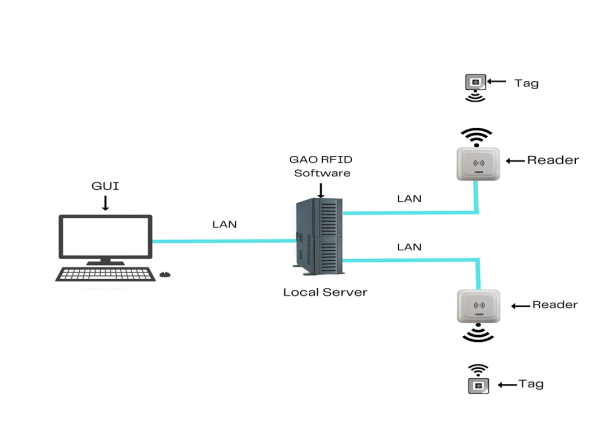 To satisfy its customers, GAO’s RFID or RFID Systems for museums, historical sites, and similar institutions are offered in 2 versions. One version is that its software is running on a local server, and another version is that its software runs in the cloud. The above illustrates GAO system for museums, historical sites, and similar institutions with its software running on a local server.
To satisfy its customers, GAO’s RFID or RFID Systems for museums, historical sites, and similar institutions are offered in 2 versions. One version is that its software is running on a local server, and another version is that its software runs in the cloud. The above illustrates GAO system for museums, historical sites, and similar institutions with its software running on a local server.
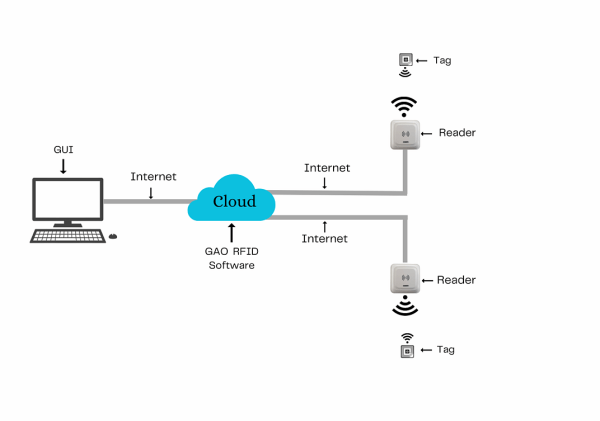 The above illustrates GAO system for museums, historical sites, and similar institutions with its software running in cloud.
The above illustrates GAO system for museums, historical sites, and similar institutions with its software running in cloud.
GAO’s RFID technologies bring the many benefits to museums, historical sites, and similar institutions industry:
- Improved inventory management: GAO’s RFID can be used to track the movement of objects within a museum or historical site. This can help to ensure that objects are not lost or stolen, and it can also help to improve the efficiency of inventory management.
- Enhanced visitor experience: Our RFID can be used to provide visitors with additional information about the objects they are viewing. This can be done by using RFID readers to scan tags and then providing visitors with access to multimedia content, such as videos, audio recordings, and interactive exhibits.
- Increased security: GAO’s RFID can be used to prevent unauthorized access to certain areas of a museum or historical site. This can help to protect both the objects on display and the visitors themselves.
GAO’s BLE technologies offer longer reading range and particularly attractive for applications with larger workspaces within museums, historical sites, and similar institutions industry:
- Increased engagement: Our BLE can be used to create interactive experiences for visitors. For example, BLE beacons could be used to trigger the start of a scavenger hunt or to provide visitors with clues about the history of a particular object. This can help to increase visitor engagement and make them more likely to remember their visit.
- Improved wayfinding: GAO’s BLE can be used to help visitors find their way around a museum or historical site. For example, BLE beacons could be used to create a virtual tour that guides visitors through the museum or to provide visitors with directions to specific exhibits or areas. This can help to improve the visitor experience and make it easier for visitors to find what they are looking for.
- Increased efficiency: Our BLE can be used to improve the efficiency of operations at a museum or historical site. For example, BLE beacons could be used to track the movement of visitors throughout the museum or to identify areas where there are large crowds. This information can be used to improve the flow of traffic and to ensure that visitors have a positive experience.
GAO’s RFID and drone technologies are often combined, and such solutions offer the following benefits to museums, historical sites, and similar institutions industry:
- Reduced costs: GAO’s RFID can be used to replace traditional inventory management systems, while drones can be used to replace manual labor for tasks such as cleaning and maintenance. This can help to reduce costs and improve efficiency.
- Improved research: Our RFID can be used to track the movement of objects within a museum or historical site, while drones can be used to collect data on visitor behavior. This data can be used to improve the visitor experience and to better understand how visitors interact with exhibits.
- Increased accessibility: Drones can be used to provide aerial views of exhibits and locations that would otherwise be inaccessible to visitors, such as those located on high shelves or in remote areas. This can help to increase accessibility and make the museum or historical site more inclusive.
Here are benefits of GAO’s IoT technologies to museums, historical sites, and similar institutions industry:
- Enhanced visitor experience: GAO’s IoT can be used to create interactive exhibits that allow visitors to learn about the objects on display in a more engaging way. For example, visitors could use their mobile devices to scan a QR code to learn more about a particular object, or they could use a touchscreen kiosk to interact with a virtual exhibit.
- Reduced costs: GAO’s IoT can be used to automate tasks such as inventory management and cleaning, which can help to reduce costs. For example, sensors could be used to track the movement of objects in a museum, and to trigger alerts when objects are moved outside of their designated areas.
GAO Helps Customers Comply with Standards, Mandates & Regulations of Museums, Historical Sites, and Similar Institutions
GAO RFID Inc. has helped many companies in museums, historical sites, and similar institutions to deploy RFID, BLE, IoT and drone systems and to ensure such deployments complying with the applicable industry standards, mandates, and government regulations:
RFID, BLE, IoT, & Drone Standards & Mandates
- EPCglobal UHF Gen2: This standard specifies the air interface protocol for RFID systems operating at 915 MHz. It is commonly used in museums and other cultural institutions for asset tracking and inventory management.
- DoD-STD-2010: This standard is used by the United States Department of Defense for RFID systems. It is commonly used in museums and other cultural institutions that receive government funding.
- Zigbee: Zigbee is a low-power wireless networking protocol that is commonly used for IoT applications in museums and historical sites. Zigbee is ideal for applications that require long battery life, such as sensor networks and asset tracking.
- FAA: The Federal Aviation Administration (FAA) is the U.S. government agency that regulates civil aviation. The FAA has issued several rules and regulations governing the use of drones, including in museums and historical sites.
- FCC: The Federal Communications Commission (FCC) regulates the use of BLE devices in the United States. The FCC has set limits on the power that BLE devices can transmit, and it has also set requirements for how BLE devices must be labeled.
- Data privacy: Museums and historical sites that collect data from visitors, such as their location or their interaction with exhibits, must comply with data privacy laws such as the General Data Protection Regulation (GDPR).
- ICAO: The International Civil Aviation Organization (ICAO) is a specialized agency of the United Nations that sets international standards and recommended practices for civil aviation. ICAO has issued several standards and recommended practices for the use of drones, including in museums and historical sites.
Government Regulations
- The Americans with Disabilities Act (ADA): The ADA requires museums and historical sites to be accessible to people with disabilities.
- The Occupational Safety and Health Act (OSHA): OSHA requires museums and historical sites to provide a safe workplace for their employees.
- The Archaeological Resources Protection Act (ARPA): ARPA protects archaeological resources on federal lands. This includes artifacts, fossils, and other objects that are at least 100 years old.
- The National Historic Preservation Act (NHPA): The NHPA protects historic properties, including buildings, structures, and objects.
Canadian Government Regulations
- The Canadian Museums Association Code of Ethics: The Canadian Museums Association Code of Ethics sets out several principles that museums should uphold, including respect for the public, the collections, and the staff.
- The Canadian Cultural Property Export and Import Act: The Canadian Cultural Property Export and Import Act regulates the export and import of cultural property.
- The Ontario Heritage Act: The Ontario Heritage Act protects historic properties, including buildings, structures, and objects.
- The Alberta Historical Resources Act: The Alberta Historical Resources Act protects historic properties, including buildings, structures, and objects.

EPCglobal

United States Department of Defense

International Civil Aviation Organization

Federal Aviation Administration

Federal Communications Commission
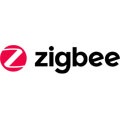
Zigbee

American with Disabilities
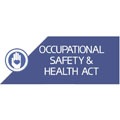
Occupational Safety and Health Act

Canadian Museums Association

Ontario Heritage Act

Alberta Historical Resources Act

General Data Protection Regulation
GAO Software Provides Easy Integration with API
GAO’s RFID and BLE software offers a free trial for both the server-based and cloud versions, and offers an API to the important systems in museums, historical sites, and similar institutions such as
- Personnel management: Museums and historical sites can use personnel management software to track employee information, manage payroll, and schedule shifts. This can help to ensure that the museum is compliant with labor laws and that employees are able to work efficiently.
- Equipment management: Museums and historical sites can use equipment management software to track equipment inventory, schedule maintenance, and manage repairs. This can help to ensure that the museum has the equipment it needs to operate, and that the equipment is properly maintained.
- Access control: Museums and historical sites can use access control software to control who has access to the museum’s facilities and collections. This can help to protect the museum’s assets and ensure the safety of visitors and staff.
- Warehouse management: Museums and historical sites can use warehouse management software to track inventory, manage orders, and fulfill shipments. This can help to ensure that the museum has the materials it needs to operate and that the materials are delivered to the right place at the right time.
- Supply chain management: Museums and historical sites can use supply chain management software to track the flow of goods and services from suppliers to the museum. This can help to ensure that the museum is getting the best possible prices for the goods and services it needs and that the goods and services are delivered on time.
GAO has enabled its customers to make use of some of leading software and cloud services in museums, historical sites, and similar institutions industry. Below are some of popular software and cloud services in museums, historical sites, and similar institutions industry.
- Workday: Workday is a cloud-based human capital management (HCM) software that can be used to manage employee data, payroll, benefits, and performance. It also offers features for time tracking, scheduling, and leave management.
- SAP SuccessFactors: SAP SuccessFactors is another cloud based HCM software that offers a wide range of features for managing employees, including recruiting, onboarding, training, and development.
- Oracle Cloud HCM is a cloud based HCM software that offers a wide range of features for managing employees, including payroll, benefits, and performance.
- PeopleSoft HCM Cloud is a cloud based HCM software that offers a wide range of features for managing employees, including payroll, benefits, and performance.
- Avigilon Control Center is a video surveillance and access control software that helps organizations to monitor and control access to their facilities. It offers features for card access, facial recognition, and visitor management.
- Microsoft Dynamics 365 Supply Chain Management is an ERP software that includes warehouse management capabilities. It offers features for picking, packing, and shipping.
- LenelS2 Identity Manager Cloud is an access control software that helps organizations to manage access to their facilities and assets. It offers features for card access, biometrics, and role-based access control.
- HID Global Access Control Station Cloud is an access control software that helps organizations to manage access to their facilities and assets. It offers features for card access, biometrics, and reporting.
- Collection management software: This type of software helps museums track and manage their collections, including cataloging objects, tracking condition, and managing loans. Some popular collection management software programs include MuseumPlus, Adlib, and PastPerfect.
- Visitor management software: This type of software helps museums track and manage their visitors, including collecting contact information, selling tickets, and managing reservations. Some popular visitor management software programs include Tessitura, Eventbrite, and Xirrus.
- Google Cloud Platform (GCP) offers a wide range of cloud services, including computing, storage, networking, machine learning, and artificial intelligence. GCP is a good choice for museums and historical sites that want to take advantage of the latest cloud technologies.
- Amazon Web Services (AWS) is another leading cloud provider that offers a wide range of services. AWS is a good choice for museums and historical sites that need a scalable and reliable cloud platform.

Workday

SAP SuccessFactors

Oracle Cloud Human Capital Management
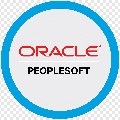
Oracle Cloud Human Capital Management

Avigilon Control Center

LenelS2 Identity Manager Cloud

HID Global Access Control Station Cloud
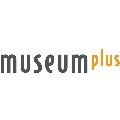
MuseumPlus

Google Cloud Platform

Amazon Web Services
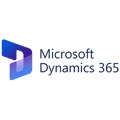
Microsoft Dynamics 365 Supply Chain Management
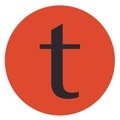
Tessitura
GAO has worked with some of the leading technology companies in museums, historical sites, and similar institutions in to provide integrated its RFID, BLE, IoT and drone solutions to customers. Here are some of the technology leaders in museums, historical sites, and similar institutions industry
- Google Arts & Culture is a division of Google that offers a variety of tools and services to museums and other cultural institutions. These include a virtual tour platform, an online collections database, and a variety of educational resources.
- Aventis Systems is a company that specializes in developing software for museums and other cultural institutions. Their products include a collection management system, a visitor management system, and an education management system.
- MuseumNext is a company that provides consulting services to museums and other cultural institutions. They specialize in helping organizations with their technology strategy, implementation, and training.
- TechSoup is a non-profit organization that provides discounted technology products and services to nonprofits, including museums. They offer a variety of products and services, including software, hardware, and training.
- AVer Information Systems is a global leader in video conferencing, collaboration, and digital signage solutions. They offer a wide range of products and services that can be used to create interactive and engaging experiences for museum visitors.
- Epson is a global leader in imaging and printing solutions. They offer a wide range of products, including projectors, displays, and scanners, that can be used to create immersive and educational experiences for museum visitors.
- Intelisys is a leading provider of integrated technology solutions for businesses and organizations. They offer a wide range of products and services, including security systems, audio/visual systems, and networking solutions, that can be used to improve the security, efficiency, and visitor experience at museums.
- NEC Display Solutions is a global leader in display solutions. They offer a wide range of products, including projectors, displays, and interactive tables, that can be used to create engaging and interactive experiences for museum visitors.
- Crestron is a leading provider of audiovisual, security, and networking solutions for businesses and organizations. They offer a wide range of products and services that can be used to improve the visitor experience at museums.
- Leica Geosystems is a global leader in surveying and mapping solutions. They offer a wide range of products and services that can be used to create and manage digital models of museum collections and exhibits.
- Planon is a leading provider of integrated workplace management (IWM) solutions for businesses and organizations. They offer a wide range of products and services that can be used to improve the efficiency and sustainability of museums.
- Siemens is a global leader in automation, electrification, and digitization. They offer a wide range of products and services that can be used to improve the operations and visitor experience at museums.

Google Arts & Culture

Aventis Systems

MuseumNext

TechSoup
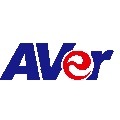
AVer Information Systems

Epson

Intelisys
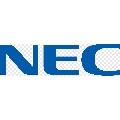
NEC Display Solutions

Crestron
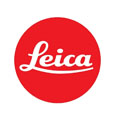
Leica Geosystems

Planon

Siemens
Case Studies of RFID Applications
Below are some RFID application cases in museums, historical sites, and similar institutions industry.
Metropolitan Museum of Art (New York, NY): The Metropolitan Museum of Art is one of the largest and most prestigious museums in the world. It has a collection of over two million objects, including paintings, sculptures, and artifacts from around the world. In 2008, the Met began using RFID tags to track the location of its collection. This has helped the museum to improve its inventory management and to prevent theft and loss.
Canadian War Museum (Ottawa, ON): The Canadian War Museum is a national museum dedicated to the history of war. It has a collection of over 200,000 objects, including weapons, uniforms, and photographs. In 2010, the War Museum began using RFID tags to track the location of its collection. This has helped the museum to improve its inventory management and to prevent theft and loss.
National Civil Rights Museum (Memphis, TN): The National Civil Rights Museum is a museum dedicated to the history of the civil rights movement in the United States. It has a collection of over 40,000 objects, including photographs, documents, and artifacts. In 2012, the Civil Rights Museum began using RFID tags to track the location of its collection. This has helped the museum to improve its inventory management and to prevent theft and loss.
Royal BC Museum (Victoria, BC): The Royal BC Museum is a provincial museum dedicated to the history of British Columbia. It has a collection of over 7 million objects, including artifacts from First Nations cultures, as well as European settlers. In 2014, the Royal BC Museum began using RFID tags to track the location of its collection. This has helped the museum to improve its inventory management and to prevent theft and loss.
Smithsonian National Air and Space Museum (Washington, D.C.): The Smithsonian National Air and Space Museum is one of the most popular museums in the world. It has a collection of over 65,000 aircraft, spacecraft, and other artifacts. In 2016, the museum began using UFH RFID tags to track the location of its collection. This has helped the museum to improve its inventory management and to prevent theft and loss.
Museum of the City of New York (New York, NY): The Museum of the City of New York is a museum dedicated to the history of New York City. It has a collection of over 1.5 million objects, including photographs, documents, and artifacts. In 2020, the Museum began using UFH RFID tags to track the location of its collection. This has helped the museum to improve its inventory management and to prevent theft and loss.
Royal Alberta Museum (Edmonton, AB): The Royal Alberta Museum is a provincial museum dedicated to the history and natural history of Alberta. It has a collection of over 6 million objects, including fossils, artifacts, and works of art. In 2021, the museum began using UFH RFID tags to track the location of its collection. This has helped the museum to improve its inventory management and to prevent theft and loss.
GAO RFID Systems & Hardware for Museums, Historical Sites, and Similar Institutions
GAO RFID Inc. offers the largest selection of BLE gateways, BLE beacons, RFID readers, tags, antenna, printers, and integrated RFID systems for various industries, including museums, historical sites, and similar institutions.
BLE (Bluetooth Low Energy)
GAO offers advanced BLE gateways:
as well as versatile beacons with such important functions as temperature, humility, vibration and panic button:
GAO’s BLE technology is suitable for many industries, including electric vehicle manufacturing.
UHF (Ultra High Frequency) RFID
GAO offers the largest selection of UHF RFID readers for various industries, including electric vehicle manufacturing:
GAO RFID offers the widest choice of UHF RFID tags, labels, badges, wristbands for various industries, including electric vehicle manufacturing:
and an array of antennas to address different applications:
HF (High Frequency), NFC (Near Field Communications) and LF (Low Frequency) RFID
GAO offers the largest selection of HF, NFC, and LF RFID readers for various industries, including electric vehicle manufacturing:
- High Frequency 13.56 MHz Passive RFID Readers
- Low Frequency 134 kHz Passive RFID Readers
- Low Frequency 125 kHz Passive RFID Readers
HF, NFC and LF RFID tags, labels, badges, wristbands for various industries, including electric vehicle manufacturing:
and antennas:
GAO also offers RFID printers:
Digital I/O adapters:
and relay controllers:
For embedded applications, GAO offers UHF, HF and LF RFID reader modules:
- UHF 860 – 960 MHz RFID Modules
- UHF 860-960 MHz RFID Modules – GAO RFID Inc.
- 125 kHz Low Frequency RFID Modules
The RFID systems by GAO are highly popular for clients in electric vehicle manufacturing:
Physical asset or operational equipment tracking system:
Assets that can be effectively tracked using GAO’s technologies include.
- Art handling equipment: This includes dollies, carts, and lifts that are used to move large or heavy objects.
- Environmental monitoring equipment: This includes temperature and humidity sensors that are used to ensure that the environment is safe for the collection.
- Security equipment: This includes cameras, alarms, and motion detectors that are used to protect the collection from theft and vandalism.
- Audiovisual equipment: This includes projectors, screens, and sound systems that are used to create interactive exhibits and presentations.
- Computer software: This includes inventory management software, conservation software, and educational software that is used to manage the collection, conserve objects, and educate visitors.
People or workers tracking system:
Personnel or people access control system:
Parking or vehicle control system:
GAO Has Served Museums, Historical Sites, and Similar Institutions Extensively
GAO’s products and technologies have helped its customers in museums, historical sites, and similar institutions industry to achieve success in digitalization, interactivity, STEAM (science, technology, engineering, arts, and math) education, community engagement, and sustainability.
GAO RFID Inc. has deployed RFID, BLE and IoT projects for many companies in museums, historical sites, and similar institutions, including many in its various divisions such as
- Art museums: These museums focus on the visual arts, such as painting, sculpture, and photography.
- Natural history museums: These museums focus on the natural world, such as plants, animals, and geology.
- Science museums: These museums focus on science and technology, such as astronomy, physics, and engineering.
- History museums: These museums focus on human history, such as wars, cultures, and civilizations.
- Children’s museums: These museums are designed for children, and they often feature interactive exhibits and programs.
- Military museums: These museums focus on military history, such as wars, battles, and weapons.
- Archaeological museums: These museums focus on archaeological artifacts, such as fossils, pottery, and jewelry.
- Memorial museums: These museums are dedicated to remembering and honoring people or events.
Here are some of the leading companies in museums, historical sites, and similar institutions industry:
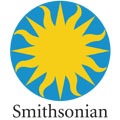
Smithsonian Institution
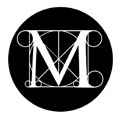
Metropolitan Museum of Art
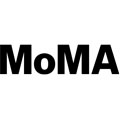
Museum of Modern Art
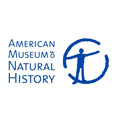
American Museum of Natural History

Los Angeles County Museum of Art
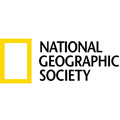
National Geographic Society
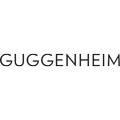
Guggenheim Museum

Whitney Museum of American Art
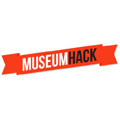
Museum Hack
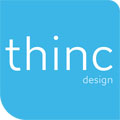
Thinc Design
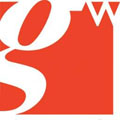
Glaserworks
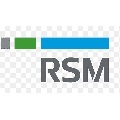
RSM Visuals

ESI Design

LD Products

Artechouse

The Tech Interactive

Exhibit Technologies
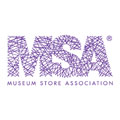
Museum Store Association

Canadian Museum of Nature
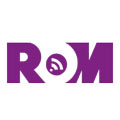
Royal Ontario Museum
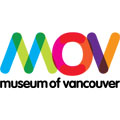
Vancouver Museum
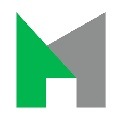
Canadian War Museum
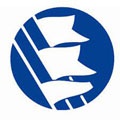
Maritime Museum of the Atlantic

Canada Science and Technology Museum
